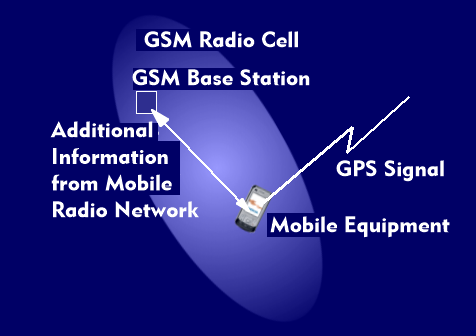assisted GPS (AGPS)
Assisted GPS (AGPS) combines the use of the satellite-based GPS system with the reception of so-called assistance information from cellular mobile networks. With AGPS, higher location accuracy and faster determination of the first position, Time to First Fix ( TTFF), is possible. The location accuracy reaches up to a few meters and is achieved even in cities and buildings thanks to the high sensitivity.
As additional assistance information, AGPS uses runtime information in GSM radio cells. If an AGPS receiver can simultaneously receive radio signals from multiple radio cells, then it can use cross bearings to determine its location. Alternatively, an AGPS receiver can determine its location from the signal propagation time to the GSM transmission tower. The assistance information sent via the GSM network relieves the navigation device and leads to much faster results than directly via the GPS system, because the AGPS server is continuously supplied with current satellite positions and sends the location-related data in the mobile networks.
The advantage is that localization can take place even if the receiving device, the cell phone or smartphone, receives only one GPS satellite.

